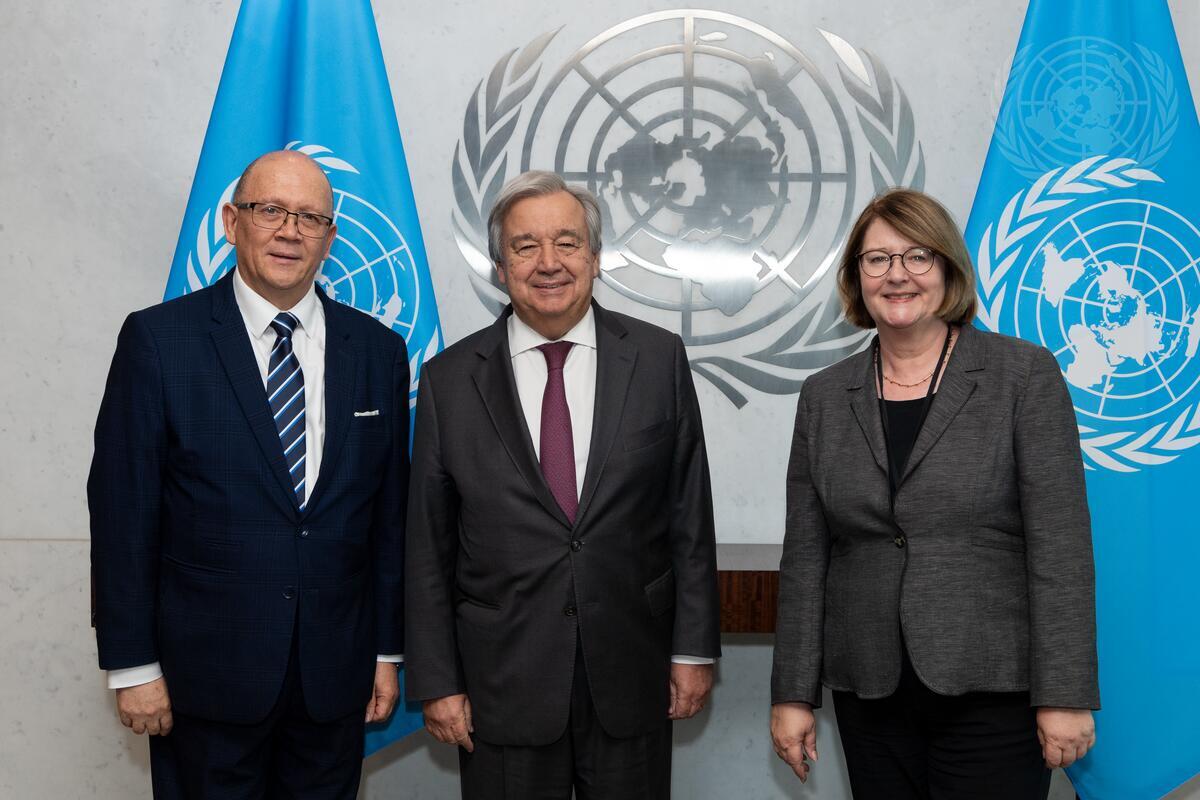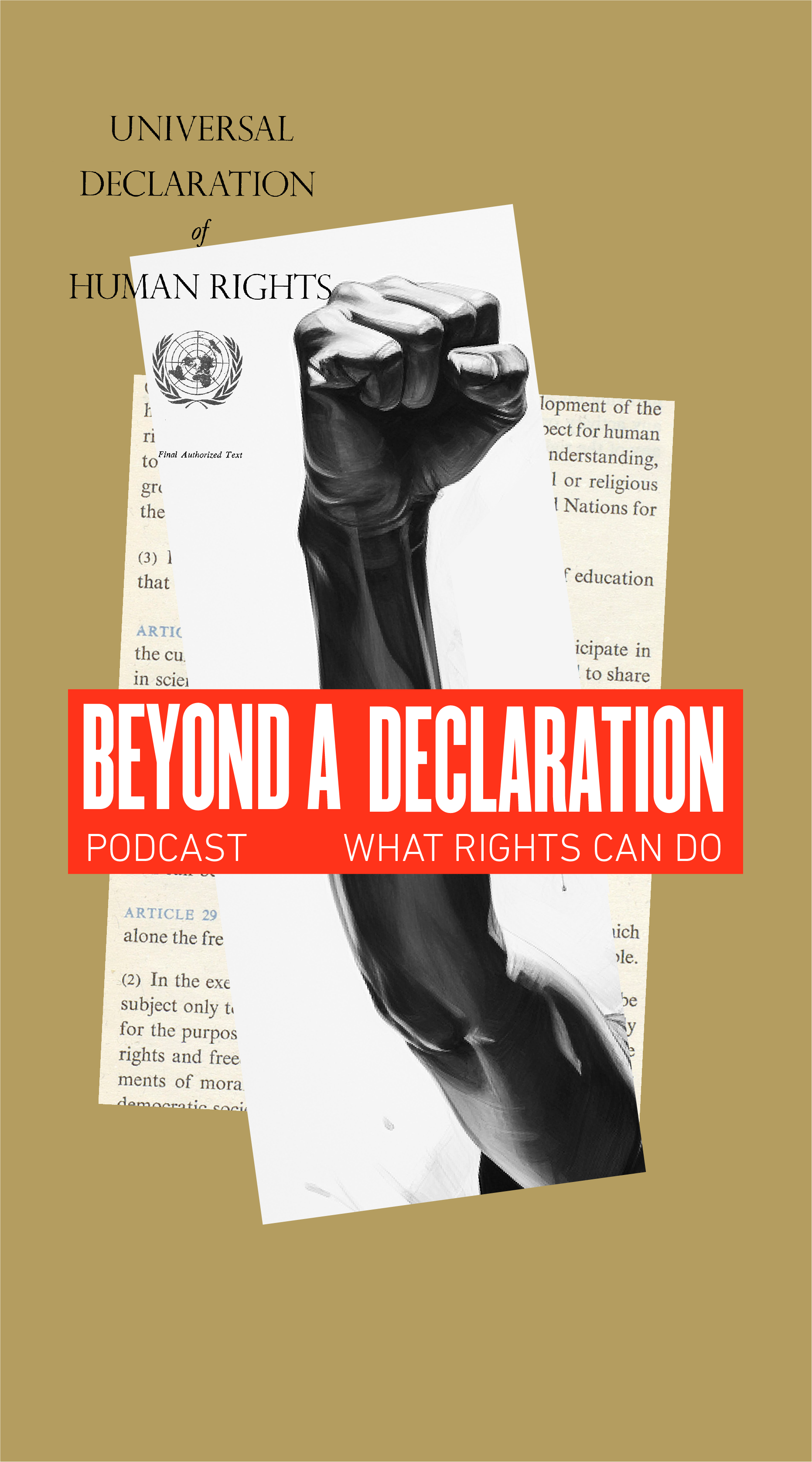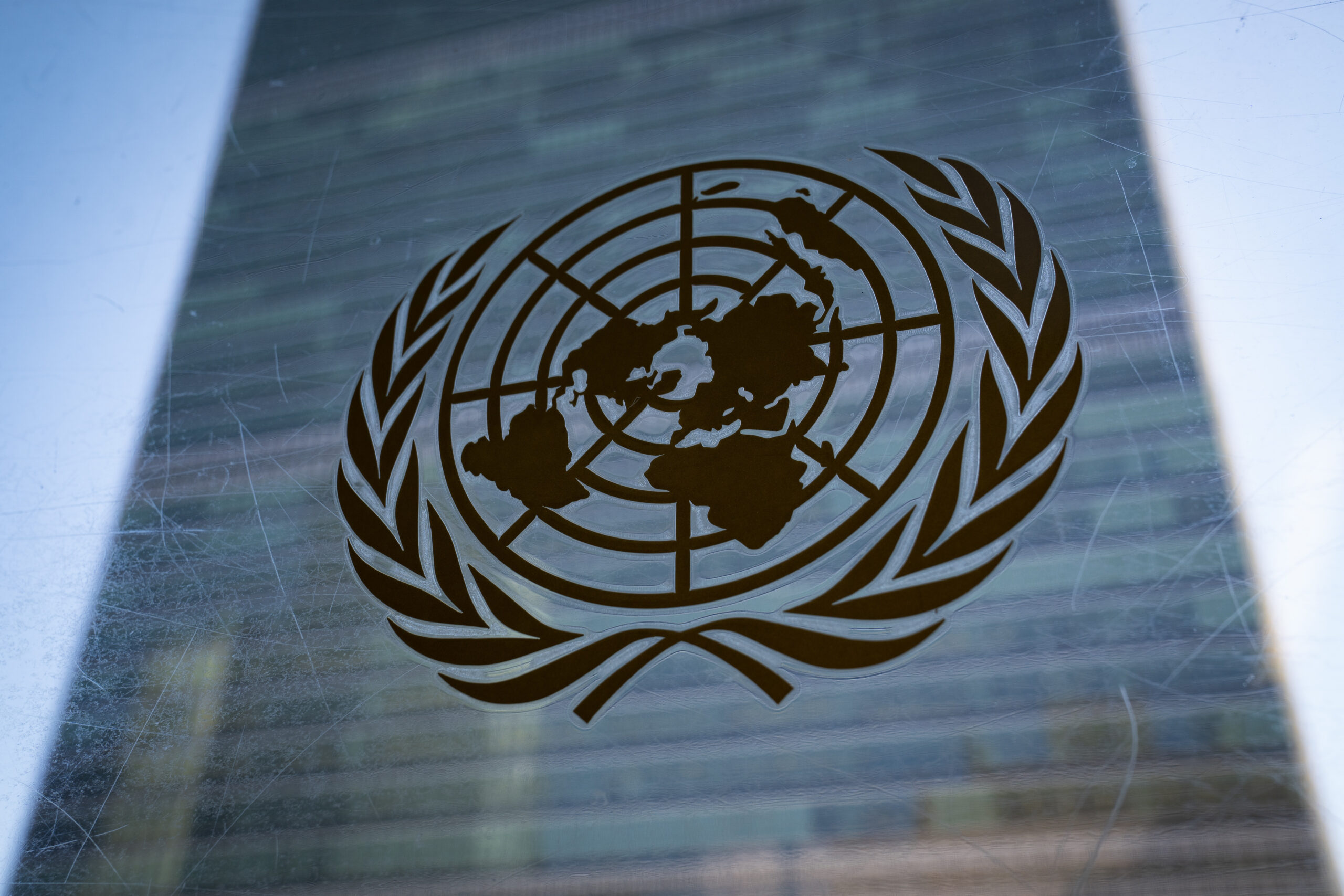This year’s United Nations High Level Political Forum on Sustainable Development (HLPF) took place on July 6-15, 2021 amid the massive impacts of the COVID-19 pandemic in which more than 4 million people perished, close to 190 million have become sick, over 250 million have lost their jobs, over 1.6 million had their education disrupted and hundreds of millions more have already fallen into acute hunger and extreme poverty. The 2021 HLPF also marks the second time that the Forum was held virtually, save for the physical presence of some government representatives and international agencies in New York.
The HLPF was supposed to have been the occasion to see where the world stands insofar as meeting the aspirations of the 2030 Agenda for Sustainable Development and the Sustainable Development Goals (SDGs) in light of the worst economic, financial and social crisis in modern times. The HLPF focused on the theme of “Sustainable and resilient recovery from the COVID-19 pandemic that promotes the economic, social and environmental dimensions of sustainable development: building an inclusive and effective path for the achievement of the 2030 Agenda in the context of the decade of action and delivery for sustainable development.”
Throughout the eight-day meeting, governments, international institutions, and other stakeholders exchanged their views regarding progress of the following SDGs: (1) No poverty, (2) Zero hunger, (3) Good health and well-being, (8) Decent work and economic growth, (10) Reduced inequalities, (12) Responsible consumption and production, (13) Climate action, (16) Peace, justice and strong institutions, and (17) Partnerships. Forty-two countries presented voluntary national reviews (VNRs) of their efforts to achieve the 2030 Agenda. The HLPF concluded with the adoption of a
Ministerial Declaration that contains recommendations for actions that will guide the international community in achieving the SDGs, prevent climate catastrophe and recover from the pandemic.
This does seem like a straightforward report back of the 2021 HLPF. But then again, the more important questions beg to be asked But what does all of this mean for the lives and livelihoods of the billions struggling to keep their heads above the water, literally and figuratively? Did HLPF deliver outcomes that will inspire confidence and optimism that transformative changes are forthcoming?
Hope
Agenda 2030 was adopted by all United Nations Member States in August 2015 as a universal call to action to end poverty, protect the planet and ensure that all people enjoy peace and prosperity by 2030.
Agenda 2030 and the 17 Sustainable Development Goals set out aspirational objectives that are voluntarily implemented through policies and programs at the country level. The indivisible nature of the SDGs means that ‘no goal is achieved until all goals are achieved.’ But, like many other internationally negotiated agreements, Agenda 2030 does not entail legally binding obligations on governments, and there are no drawbacks for those that fall behind in their implementation. It, however, has an innovative ‘bottom-up approach’ to follow-up and review that supposedly guarantees multi-level accountability and encourages greater public ownership of the development agenda. The national level remains the most crucial place to review progress around the Agenda 2030, but regional review mechanisms have also been set up to promote peer learning for countries that may have similar development contexts and challenges.
The HLPF is a forum for a global exchange on national experiences in carrying out Agenda 2030. Established in July 2013 by the UN General Assembly as the main forum for sustainable development issues within the UN, the HLPF convenes annually in July under the auspices of the Economic and Social Council (ECOSOC). It reviews an annual SDG progress report prepared by the UN Secretariat, five or six SDGs under thematic review, hears out countries’ Voluntary National Reviews (VNRs), and comes up with a Chair’s Summary of the discussions. Every year too, the HLPF produces a negotiated Ministerial Declaration, a political statement at the highest levels on the overall assessment of progress towards sustainable development that is then submitted for consideration to the UN General Assembly.
Hype
Six years since the adoption of Agenda 2030, and regardless of the COVID-19 pandemic, progress toward the SDGs remains underwhelming, and in some instances has even stalled or is moving backwards. This inaction prompted the UN Secretary General to declare the 2020s as the “Decade of Action” to deliver the Goals by 2030 in an attempt to mobilize the international community on three levels:
- global action to secure greater leadership, more resources and smarter solutions;
- local action embedding the needed transitions in the countries’ policies and programs; and
- people action, to generate a movement pushing for the required transformations.
However, this year’s SDG progress report highlights troubling trends and forecasts that achieving Agenda 2030 is a pipedream. Consider the following red flags in this year’s SDGs in focus:
- Ending poverty by 2030 is unattainable unless governments immediately carry out substantial policy actions particularly those that strengthen social protection systems.
- Ending hunger has become more difficult to realize with the vulnerabilities and inadequacies of global food systems that has left hundreds of millions chronically undernourished.
- Ninety percent of countries and territories still face considerable disruptions to essential health services more than a year into the pandemic.
- The pandemic is massively affecting working times and incomes. In 2020, 8.8 percent of global working hours equivalent to 255 million full-time jobs were lost.
- Existing inequalities within and among countries and territories are hitting the most vulnerable people hardest and is likely to push back progress on the SDGs by a decade. Globally, the number of refugees reached its highest level on record in 2020.
- Unsustainable production and consumption are driving the three planetary crises of climate, biodiversity and pollution.
- Climate change makes reaching the SDGs less likely. Despite the temporary emissions reductions in 2020, atmospheric concentrations of the major greenhouse gases continued to increase. Net zero carbon dioxide emissions must be reached by around 2050 to limit global warming to 1.5°C above pre-industrial levels in line with the Paris Agreement.
- 79.5 million people or roughly 1 percent of the global population had been forcibly displaced in 2019. The pandemic has exposed inequalities and discrimination and has tested, weakened, and in some cases shattered rights and protection systems in countries and territories.
- The economic fallout from the pandemic is leading to severe debt problems in countries and territories which limit their ability to respond to the pandemic, climate change and the SDGs. Foreign direct investment is expected to fall by 40 per cent.
In the different panel discussions and VNR presentations, several key messages
were repeatedly stressed as necessary for the world to recover from the multi-layered crises exposed and magnified by the pandemic: vaccine equity, universal social protection systems, reforming the global financial and trade architecture, debt relief, support for small- and medium-sized enterprises, bridging the digital divide, reducing gender equality, combatting climate change, including the phase out of fossil fuels, among others.
On the surface, there is a veneer of solidarity and commitment in the highest echelons of global governance to steer the world toward a “clean, green and inclusive” recovery. Beneath this, there are deep cracks and divides that contribute to the profound lack of political will to enact bold and transformative recommendations for action. Fundamental power asymmetries that remain unresolved between developed and developing countries, between rich and poor within societies, as well as the undue influence of corporations on the business of development lie at the core of the multilateral system’s continued inability to move the calls for international solidarity and cooperation beyond rhetoric.
While it is true that pandemic recovery is the world’s top agenda, opinions on how to make this happen differ greatly. Rich countries laud their pledges to increase their vaccine donations, while developing countries continue to push to suspend intellectual property rights to life-saving vaccines and other health products and technologies for the duration of the pandemic.
The international community has sounded the alarm on the imminent explosion of a global debt crisis as poor countries find it almost impossible to continue paying off loans while, at the same time, trying to marshal resources to attend to their people’s economic and social needs. Where developing countries push for the comprehensive overhaul of the global economic system including the debt cancellations, rich countries’ clubs and international financial institutions applaud their initiative to defer debt payments until end-2021.
While there is broad recognition of the importance of social protection systems to provide health, education, housing and livelihood support to the poorest and most vulnerable populations especially during these pandemic times, the International Monetary Fund responded by readying new loan packages. These however, come with strong recommendations for the restructuring of key economic sectors to make these more attractive to foreign corporations, and carrying out austerity measures that further limit spending on social safety nets to ensure that a country will be able to repay their debts.
Pronouncements of increasing climate action to succeed in the goal of keeping global temperature rise in check is a double-edged sword. A growing number of countries both from the global North and South, are jumping into the net zero emissions by 2050 bandwagon. What this really means is that harmful emissions from dirty industries will continue but will be “balanced out” by restoring forests and degraded lands or by relying on technologies that draw carbon from the air and store this underground.
The 13 panel discussions, 42 VNR presentations and 273 side events at HLPF 2021 affirmed what everyone already knew: the SDGs that were supposed to be the world’s economic, social and environmental lifelines were falling short even before the pandemic struck. Achieving all the Goals by 2030 is now at even greater peril with the ravaging impacts of COVID-19.
Blah
For almost two years now, the United Nations leadership has called on governments and other development actors to “build back better” and to turn the post-pandemic recovery as a “real opportunity to do things right for the future.” Many highlighted that the 2030 Agenda and the Paris Climate Change Agreement are the blueprints for recovery that will enable the creation of more sustainable, resilient and inclusive societies.
A centerpiece of every HLPF is the Ministerial Declaration, the political statement that spells out commitments and recommended actions for governments to take. There have been major criticisms already on this outcome document being negotiated months before the HLPF, making it uninformed by any of the discussions or country reports on the progress and challenges of implementing the Agenda 2030.
The 2021 Ministerial Declaration underwent four months of consultations and multiple drafts, after which the latest version was placed under “silence procedure”, which means that the text will be adopted unless the silence is broken when a Member State raises an objection on any provision in the draft text. Since the first HLPF in 2016, all Ministerial Declarations were adopted only after Member States put it in a vote. Last year, there was no Ministerial Declaration adopted at the conclusion of the HLPF because there were still outstanding disagreements and there were no procedures for holding a virtual vote.
This year was no different as Member States again struggled to reach an agreement. The Russian Federation disagreed with references to climate change, gender equality and biodiversity. Israel objected to the mention of the “right to self-determination of peoples living under colonial and foreign occupation.” Since agreement by consensus could not be reached, these paragraphs had to be voted on. In the end, the Ministerial Declaration was adopted by acclamation, but not without some Member States expressing their disappointment on both the process and the outcomes not being as ambitious as it could be.
Civil society groups decry this year’s HLPF Ministerial Declaration as long on generalities but short on bold and transformative recommendations for action to respond to the gravity of the crises the world currently faces. Instead of addressing the root causes and systemic barriers that make poor and excluded communities especially vulnerable to the pandemic, the Declaration merely affirmed old commitments that were already inadequate pre-pandemic. Instead of heeding the growing clamor for equitable universal free access to vaccines and other medical supplies and technologies by waving intellectual property rights on these for the moment, Member States would rather increase their plea for charitable donations. In the face of developing countries sinking deeper into debt and defaulting on providing for its own people’s needs, the international community has displayed its lack of bravado when it opted to uphold debt payment suspensions and not a comprehensive debt workout mechanism. It also begs the question of whether these pronouncements would transform how the world’s biggest economies, corporations and high-net individuals continue to amass huge profits with investment and trade deals that allow them to keep extracting resources and destroy the environment.
The HLPF is yet another missed opportunity for the international community to make good on past promises and to take concrete, measurable steps toward achieving the SDGs and recovering justly from the pandemic. Due to this lack of engagement, the United Nations continues to fail to deliver on bold actions that will inspire countries and people to come together behind progressive ideas and real solutions. With the hopes of ending an annual cycle of hype and blah, ‘we, the peoples’ must reclaim the UN and advance a new type of multilateralism that really serves the aspirations of people and planet. One that redistributes wealth, power and resources, and puts human rights, gender equality and climate justice front and center. A transformed multilateralism that is anchored on international cooperation and solidarity and is democratic and accountable to people and planet, Conversations and movements towards a ‘people’s multilateralism’ are growing. And it is a vision that may just be forthcoming.
Tetet Nera-Lauron is a consultant with RLS-NYC.



